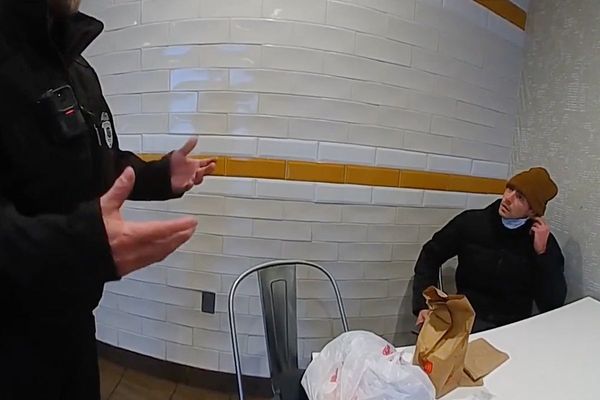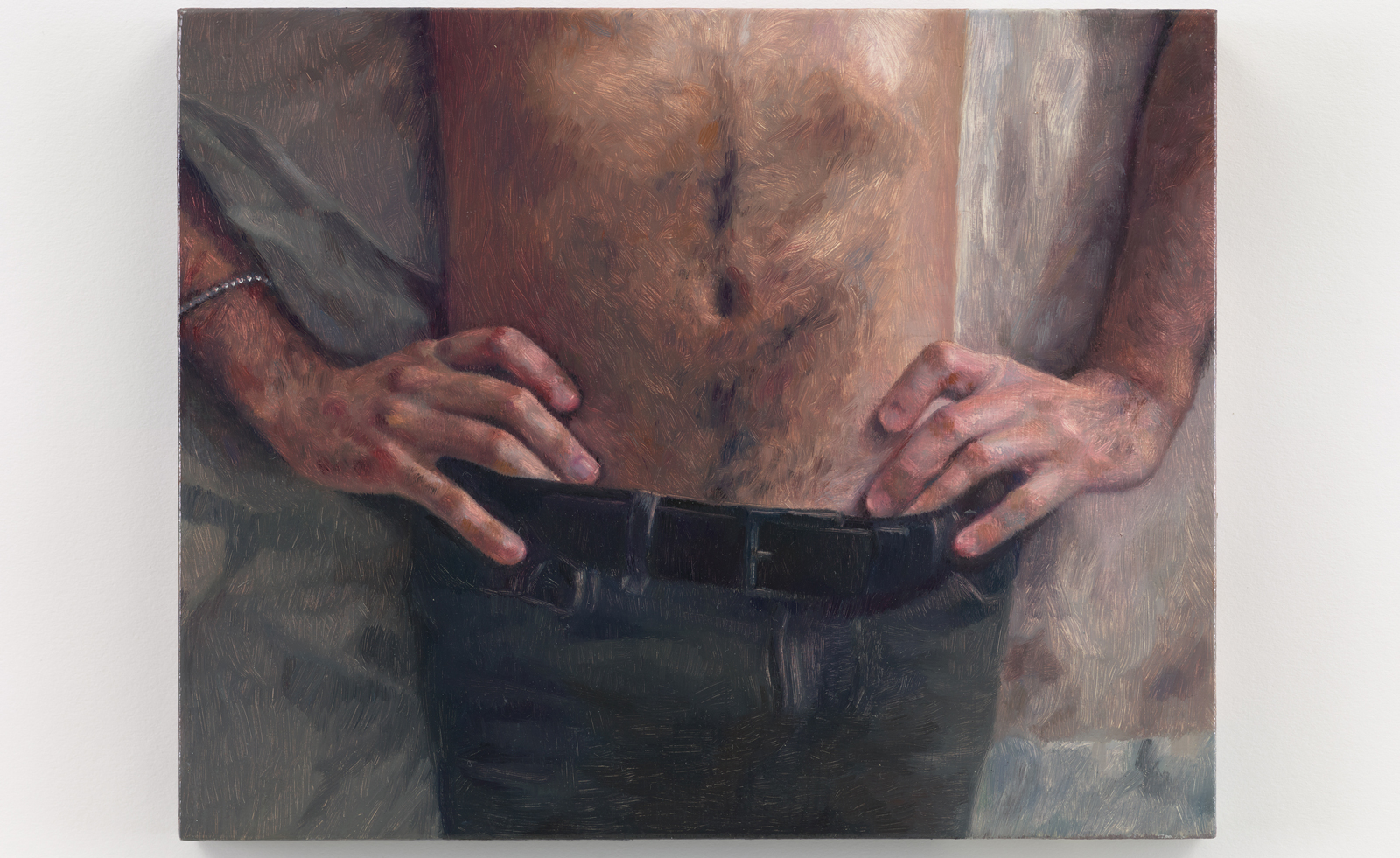
Anna Calleja fuses the intricacy of devotional paintings with the everyday trappings of contemporary life. In her new show at London’s Sim Smith, the artist presents an autobiographical selection of works in which she and other characters inhabit comfortable domestic settings. These scenes are cut through with moments of loneliness and tension, as figures zone out in front of phone screens and curl up in foetal positions.
‘I like ambiguity, that’s the point of a visual language, that you aren’t constraining it with words,’ says the artist. Two older pieces seem to represent the dual aspects of the work: love and melancholy. The Invisible String depicts the artist’s parents snuggled under a blanket, while A Stranger I Knew So Well presents a gaping hole in the bed where the artist’s ex-partner once lay.
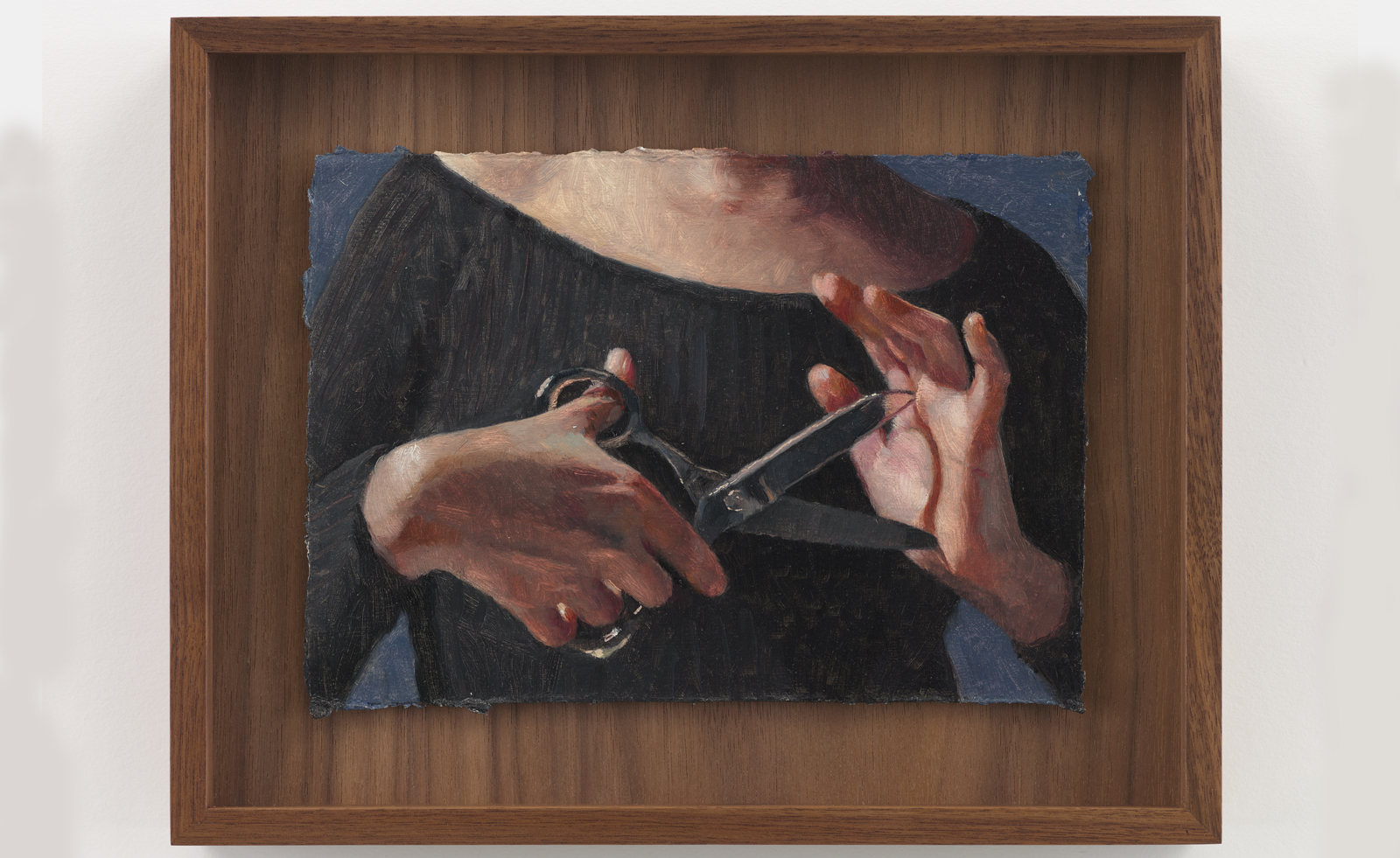
The new paintings follow Calleja’s inclusion in the Malta Biennale early in 2024, for which she researched three generations of Maltese women in her family, exploring how identity is shaped within a post-colonial country. The artist discovered that her grandmother was not allowed to speak Maltese at school, and her mother not able to buy a washing machine by herself once she was married.
The Invisible String was painted before she completed her research, which granted a new understanding of her parent’s marriage, and the example of heteronormative coupling that she grew up with. ‘They have this deep connection, and they were always a really good example of a secure kind of love that is very natural. Then when I did this research, the title of the work took on this whole new meaning, with their marriage de-emancipating my mother. She lost rights when they got married.’
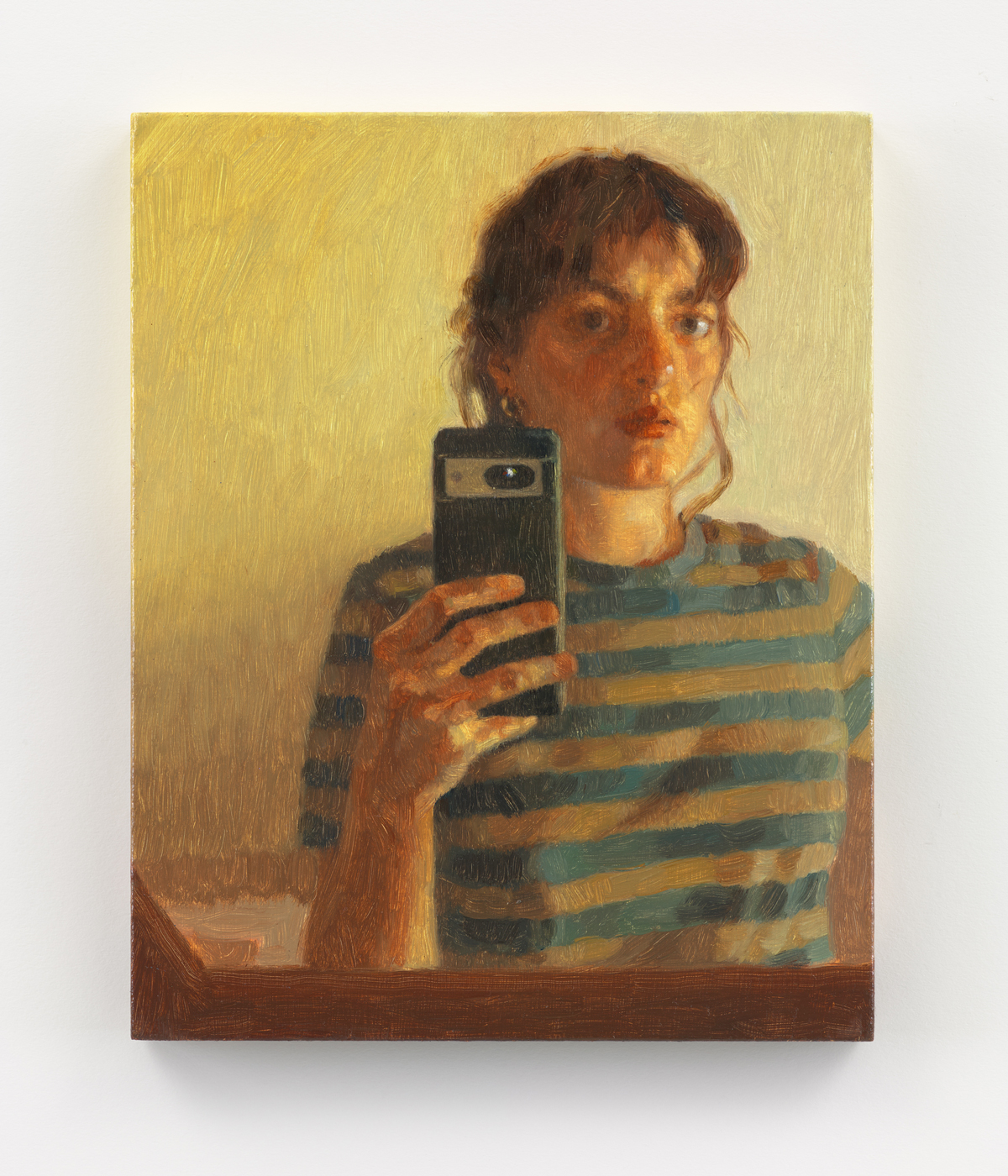
The new paintings are steeped in her family’s history and her own experience of being in relationships as a queer woman. Her work reflects on the role of women specifically within Catholic societies. This comes through in the devotional aspects of the work, suggested by their intense, glossy surfaces, glowing light, and specific hand gestures, which are inspired by allegorical pieces. ‘The Virgin Mary is this impossible form of a woman,’ the artist says. ‘She is a mother stripped of her sexuality, which is completely impossible to achieve. Growing up Catholic, there are all these ideas of how a woman should be.’
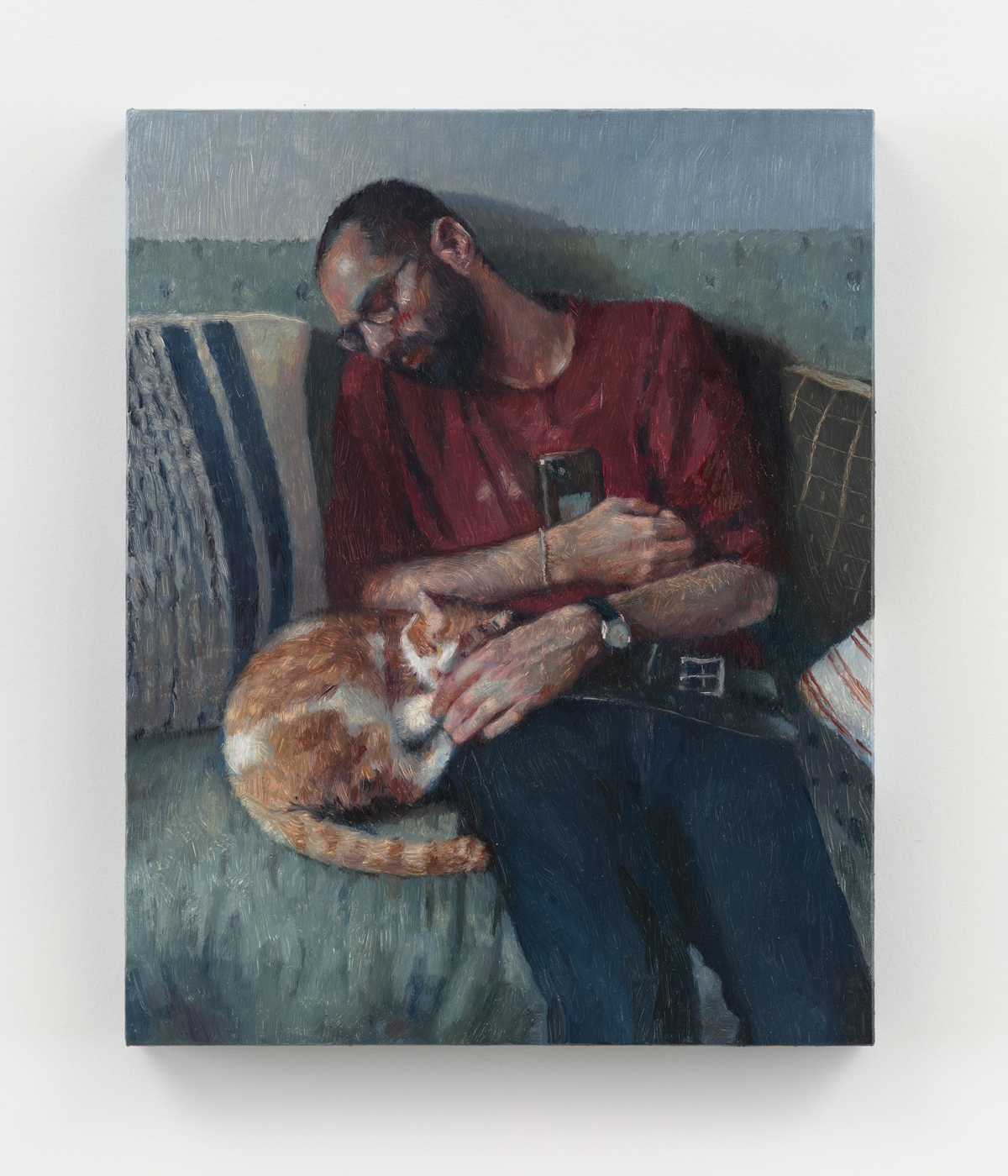
There are times at which her characters seem ready to explode. One particularly intense painting shows a female hand clutching a pair of scissors, ready to plunge them into the other palm. ‘That was like a violent palm reading of women’s destiny. Almost like a retake of the annunciation, when Mary gets the news that she is going to be this self-sacrificial thing and she just accepts it. I was thinking of the Moirai in Greek mythology and the scissors cutting the thread of life. But also, palm readings and the witchiness of that.’
Influenced by artists such as Pierre Bonnard and Gwen John, Calleja often includes the family’s ginger cat, curled comfortingly on her figures’ laps or watching the action nearby. ‘There is this unifying, peaceful factor to everyone loving the pet cat or dog,’ she says. ‘He is also constrained in the house. He is a wild animal, but he’s domesticated. There is this subtle melancholia with pets.’
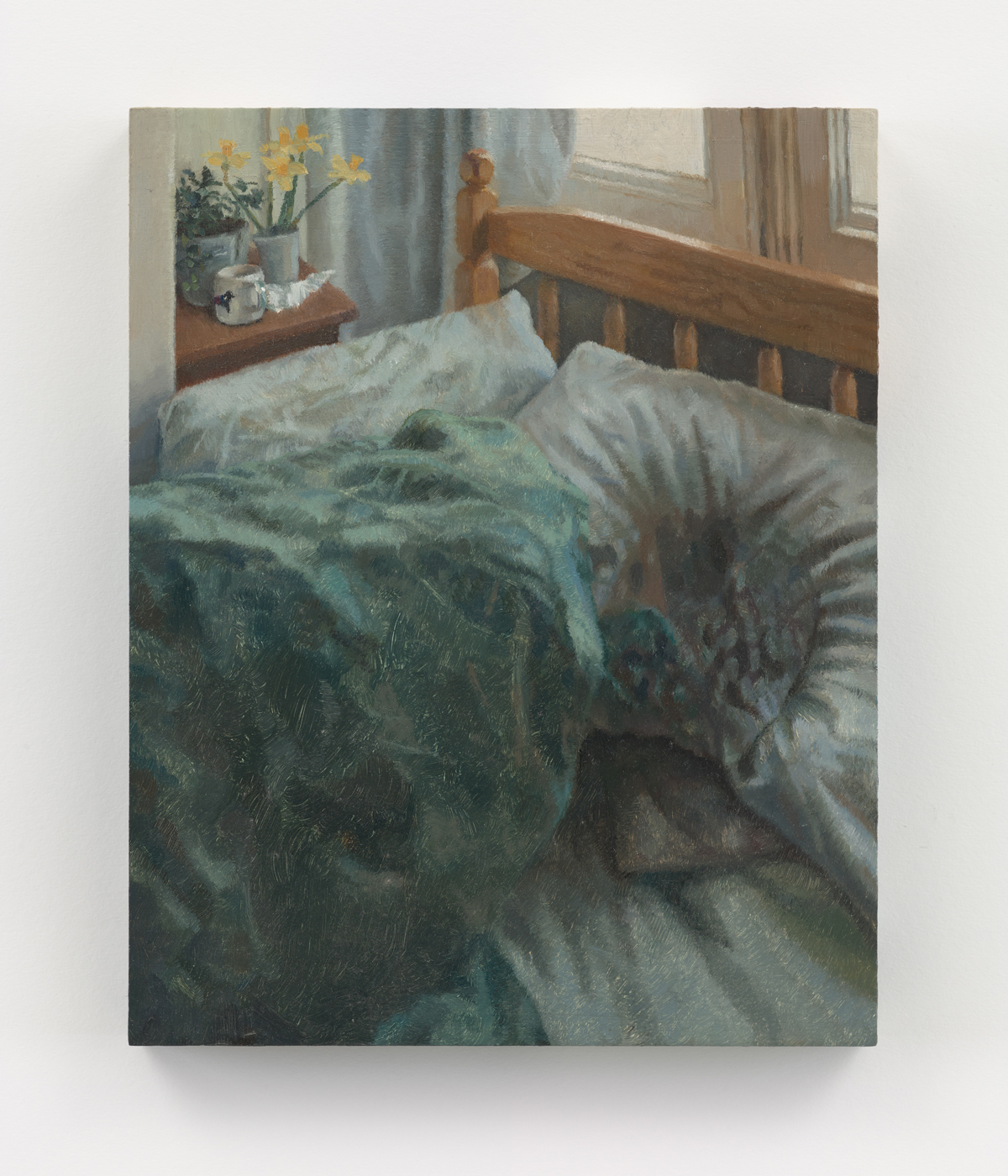
The technology in her paintings can feel like a jarring 21st-century antidote to some of these more timeless ideas. She describes the phone as a ‘third eye’ that reflects both an idealised version of ourselves and a black mirror to our darkest desires. Electrical cables snake around her paintings, suggestive of nourishing umbilical cords or connecting threads with the world outside. Phones serve to sooth and distract her subjects, who sometimes seem lulled into a place far away from one another and the viewer. Like everything in the work, they are both friend and foe, offering the possibility of rich communication or absent avoidance.
Anna Calleja’s exhibition, ‘One Fine Day in the Middle of the Night’, is at Sim Smith in London until 21 December 2024



